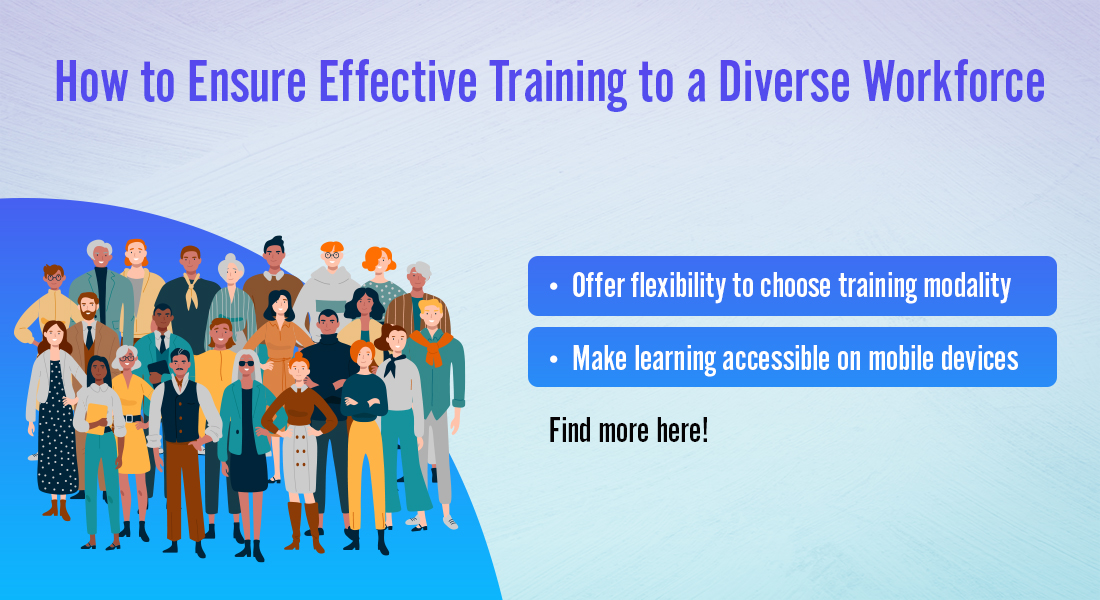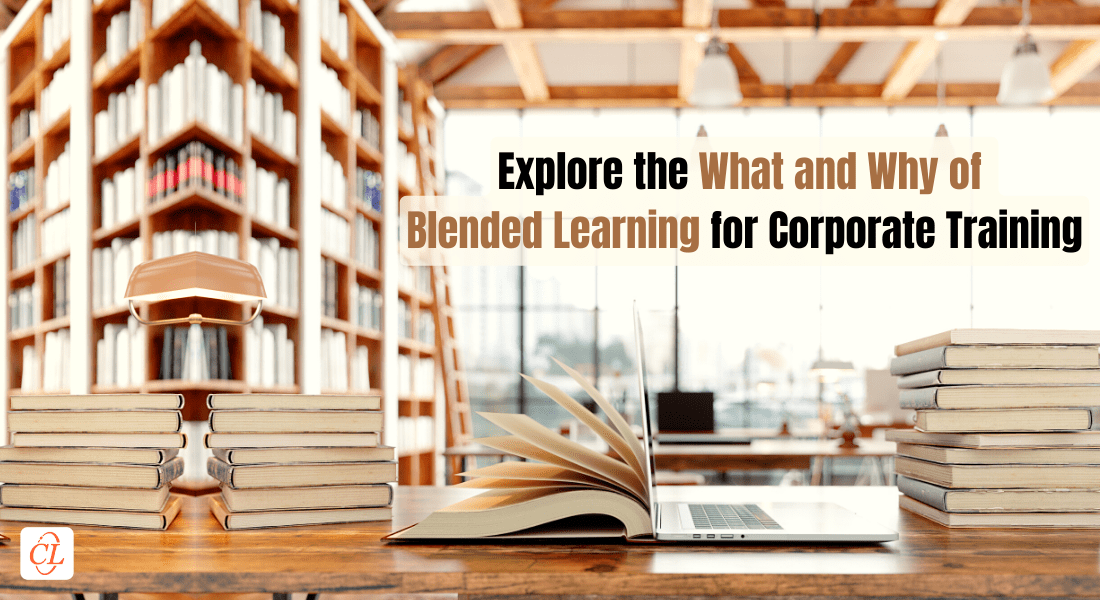Multigenerational Workplace: How Corporate Training Can Thrive in Diversity

A few months ago, I watched the movie ‘The Intern’. The movie is about a retired executive, Robert DeNiro, joining an up-and-coming tech company as an intern with a CEO, Anne Hathaway, half his age. It tells a beautiful story of the two radically different perspectives – from the wise eyes of a boomer and fresh eyes of a millennial – and how they mentor and learn from each other. This movie is a reflection of today’s business world where we sometimes have five different generations of employees in our workforce. And the challenge in corporate L&D is to find ways to train them and help them bridge this generational gap to achieve success.
4 Tips to Train a Multigenerational Corporate Workforce
- Forget classroom vs. eLearning – give learners the flexibility to choose
- Classroom or eLearning: all that learners need is convenience
- Everyone uses a mobile device: make learning accessible
- For effective learning, engagement is the key
As Training Managers, on one hand we talk about creating effective learning experiences that appeal to all workforces. On the other hand, we categorize our learners into different boxes. We have the millennials and Gen Z – the tech-savvy multitaskers, addicted to social media and easily distracted. And we have the traditionalists, the baby boomers and the Gen X workforce who supposedly detest anything ‘tech’, are ‘3-piece-suit’ formal, and don’t want to or know how to have fun. This is way too much generalization, don’t you think?
Bill Gates is a boomer, isn’t he? Does that make him any less tech-savvy than me, a millennial? He belongs to the generation that invented the computer, for crying out loud! As for me, I don’t have a Facebook account and my expertise in tech is limited to MS Word. See…we don’t all fit into those neat little boxes.
In corporate L&D, if we go by our pre-conceived notions of how a generation is supposed to be, it can cloud our judgment. No matter which generation your workers belong to, when it comes to training, they all have a few needs in common – convenience, flexibility, accessibility, and engagement. Let’s see how we can address these needs to train a modern multigenerational workforce.
Overcome the impact for COVID-19 on corporate L&D and rollout effective training.
Corporate L&D for a Multigenerational Workforce
1. Forget Classroom vs. eLearning – Give Learners the Flexibility to Choose
Classroom training vs. eLearning has been a never-ending discussion that all of corporate L&D has been involved in for the past two decades. Classroom training is familiar, a comfort zone, and a blessing when it comes to the instructor’s one-on guidance. But it is also limiting, decentralized, and very difficult (if not impossible) to conduct in the middle of a pandemic. And as for eLearning, yes, it is modern, cost-effective, engaging, and easier to deliver to learners no matter their location. But can it replace the classroom completely? Not really! So, maybe it’s time we adopt both these training approaches and let learners choose how they want to learn.
A blended learning solution that leverages both traditional and digital training methods will not only offer learners the flexibility on how they learn, it also provides you a solution for training that includes both digital and instructors’ intervention.
2. Classroom or eLearning: All that Learners Need is Convenience
For the longest time, we stuck to classroom-only training because it was convenient. Just arrange for an instructor and give them a place for the session, right? But to be honest, it was convenient only for a few, those who are available on those specific dates, or at least are located in that particular area. What about workers who are located offsite, work remotely, or live in a different state or country? Well…this is where eLearning comes in. But eLearning entails quite a bit of expenditure initially on designing and developing courses and then there is the whole thing about people not being familiar with the technology. So what can you do?
Well, no matter what training approach you go for, make it more convenient for learners.
- For training that needs an instructor’s guidance, conduct virtual classrooms where all learners can tune in. Or make a video recording of the instructor’s session available. Or give learners a social platform where they can interact with the instructor and their peers to share ideas and thoughts.
- For eLearning, make the interface user-friendly enough that a layman can navigate easily. Don’t overwhelm learners with over-the-top features or complex eLearning interactivities. Instead give them a course that is simple, easy to navigate, with robust instructional design, and gives them the specific information they are looking for.
3. Everyone Uses a Mobile Device: Make Learning Accessible
In this day and age, it doesn’t matter whether it’s a boomer or a millennial, they all have access to a smartphone, especially in a corporate setting. It’s high time for us to let go of the idea that mobile devices are a rocket science that only millennials and Gen Z can understand. Mobile devices have taken over our lives and are a great medium to make learning accessible for learners.
Whether it’s a worker out in the field or an employee sitting in the home office, or someone who has a long commute to work and can use this time to learn something new, they all can avail training through mobile learning. Better yet, combine mobile learning with microlearning to create short ‘bite-sized’ information nuggets that can be used as formal training as well as performance support.
4. For Effective Learning, Engagement is the Key
We have to get rid of this myth right away that only millennials and Gen Z learners want their training to be fun and engaging. Okay, maybe the older generation does not necessarily expect it from corporate L&D, but do you think they will say no if they could get it? So, stop making basic click next slide based-courses and start using new-age learning strategies like storytelling, scenarios, and gamification in your eLearning courses. None of these strategies discriminate based on age and appeal to everyone equally, so why should we?
As for classroom training, there are many ways to create magic in a brick and mortar room too. Involve learners in roleplays, make them an active part of the session, give them collaborative learning activities where they can brainstorm and interact and learn from one another, and have fun at the same time. This will also help bridge the unspoken-but-always-there generational gap between learners.
End Note
In his TED Talk conference, Chip Conley speaks about his experience in Airbnb as a boomer in the world of millennial techies. He talks about combining the emotional intelligence of the older generation with the digital intelligence of the newer generation to create a new cross-generational workforce who can learn from one another. And I believe this can happen in corporate L&D also.
To create a more thriving corporate L&D that can address the needs of a multigenerational workforce, it’s important to use a mix of different training approaches. That is what blended learning is all about. For more information on how blended learning can boost employee performance, download our eBook.





